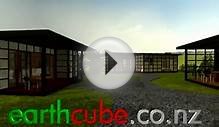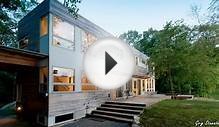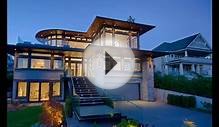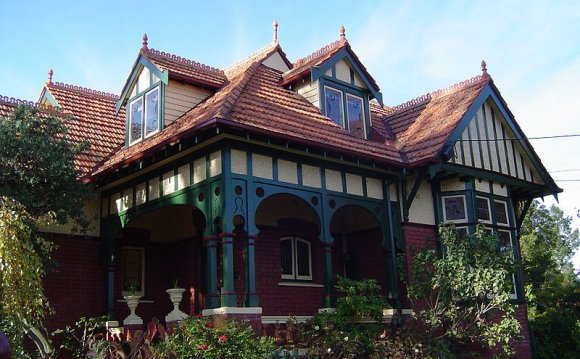
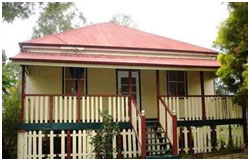 Australia’s residential property landscape contains a rich mix of different architectural styles, having been developed over many centuries, with a diverse range of influences. Many homes that we see in today’s market were built in the days of old, and the era in which a home was built can play a key role in its the asking price. With so many variations and property styles, it can be confusing to determine the style of a property and what era it was built in. To help you gain a better idea, realestateVIEW.com.au has put together a list of the ten most common architecture styles, and what key features you should look out for, to help you determine the true value of a property.
Australia’s residential property landscape contains a rich mix of different architectural styles, having been developed over many centuries, with a diverse range of influences. Many homes that we see in today’s market were built in the days of old, and the era in which a home was built can play a key role in its the asking price. With so many variations and property styles, it can be confusing to determine the style of a property and what era it was built in. To help you gain a better idea, realestateVIEW.com.au has put together a list of the ten most common architecture styles, and what key features you should look out for, to help you determine the true value of a property.
Queenslander (1840’s)
Queenslander architecture is a distinct and unique style originating from Queensland. This style was originally developed in the 1840’s to survive the wet climate. Queenslander homes are still constructed today, displaying a long lasting durability and practical design.Key features:
- Primarily of timber construction and can be low or high-set, one to two storeys.
- They are typically “tripartite” in sectional composition; underfloor (stumps), primary rooms (can be two levels), and the roof.
- The house is raised off the ground, held up by vertical stumps that give the appearance that the house is ‘floating’. This is both a stylistic and practical design to accommodate to areas prone to flooding.
- All Queenslanders have one or more veranda spaces (a sheltered edge of the house that is typically only part-enclosed and can be used as another living area).
- The roof is quite large and can be made of slate or tiles, but most Queenslanders are characteristically sheeted with corrugated metal.
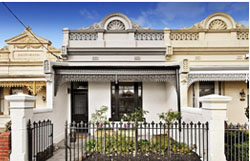 Victorian (1860-1880)
Victorian (1860-1880)
Victorian Architecture is an umbrella term, referring to several architectural styles that were conceived during the middle and late 19th century, during the reign of Queen Victoria. Generally, the style conveys a simple elegance and respectability that is demonstrated from the small Victorian Terrace House.Key features:
- The facade is often stucco (rendered with a decorative coating), with cast iron lacework to verandas and balustrades.
- The roof is usually slate or corrugated galvanised iron, with timber eaves.
- Double hung timber windows that are often arched in shape.
Italianate (1870 – 1890)
Italianate is a style in the Victorian period whichexhibits classical features that resemble the Grand Italian Villas. The houses present a highly decorative facade, with an abundance of classical ornamentation.Key features:
- The roof is usually shallow and made from slate or corrugated iron.
- The external facade consists of walls that have been decoratively rendered (stucco), as well as a veranda featuring cast iron lacework.
- The windows are double hung with timber, and usually have decorative window hoods.
- Italianate homes usually feature a semi octagonal projecting front room.
- An overall asymmetrical composition.
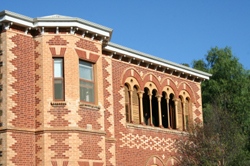 Boom Style (1875-1890)
Boom Style (1875-1890)
The Boom Style shows off the prosperity of the Gold Rush and the resultant economic boom of the 1880’s. These homes are usually recognisable by their lavish decoration and highly detailed ornamentation to the external facade.Key features:
- The roof is usually made of slate roof tiles which are scalloped in pattern.
- This style often has a veranda, which has tessellated roof tiles (tiles in a mosaic pattern) as well as fluted cast iron columns. The veranda is also heavily decorated with cast iron lacework.
- On the external facade, it is common to see polychromatic (several colours) solid brick walls, that have been rendered and textured.
- The parapets of the house (wall-like barrier at the edge of the roof) are also highly decorated, many with beautiful sculptures of shells and urns.
- The windows are double hung timber, and much like the rest of the house are decorated with elaborate pilasters (small pillars) and brick arches.
Federation/Queen Anne (1895-1915)
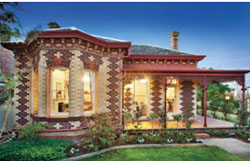 Federation homes borrow from the Queen Anne style, and the design celebrates the Federation of Australia with its lavish timber ornamentation to the external facade. This architectural style was also designed to embrace the outdoor lifestyles of Australians.Key features:
Federation homes borrow from the Queen Anne style, and the design celebrates the Federation of Australia with its lavish timber ornamentation to the external facade. This architectural style was also designed to embrace the outdoor lifestyles of Australians.Key features:
- Most Federation homes have front verandas with decorative timber features, tiling on the patio floor and prominent entry paths.
- Externally, red bricks are usually featured, and sometimes weatherboards are used. It is also common to see painted ornate timber detailing with Australian animal and flower motifs.
- The roof is usually steeply pitched and multi-faceted, and is often integrated with the veranda roof.
- Roof tiles are commonly unglazed terracotta Marseilles roof tiles, corrugated galvanised iron or sometimes slate roofing.
- Chimneys are stucco (decoratively rendered) or brick with terracotta chimney pots.
- Windows feature decorative leadlight and are timber framed.
- The composition of the Federation home is asymmetrical.
- Internally, Federation homes also have decorative internal features in the plasterwork, high ceilings and timber features.
Edwardian (1900-1915)
The Edwardian style is classified by the reign of King Edward VIIth. The houses are similar to Queen Anne, however they have less ornamentation.Key features:
- Externally, it is common to see red bricks or painted weatherboards
- The roof is made from slate, terracotta, or corrugated galvanised roofing and is usually gabled in form, often with finials (decorative ornaments that emphasize the apex of the roof).
- Many Edwardian homes also feature roof shingles, which is a type of roof covering consisting of overlapping flat tiles.
- The windows are often timber framed and feature decorative leadlight.
- These houses also contain timber ornamentation to the external facade which is much simpler in design than Queen Anne homes.
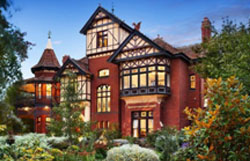
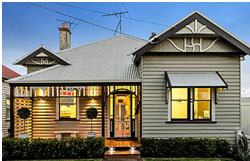
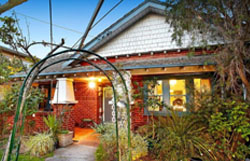
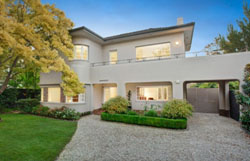
RELATED VIDEO
